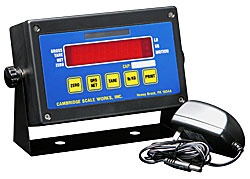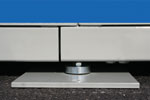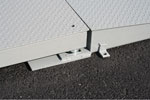|
|
|||||
|
5393 Farrell Rd. Sanford, NC 27330 |
SCALE CALIBRATION .comScale Calibration Procedures, Calibration Instructions And Scale Service Manuals |
||||
|
Call (919) 776-7737 |
|||||
| SALES / CALIBRATION / RENTALS |
Celebrating
over 30 years in business
|
||||
Central Carolina Scale Service, Repair and Scale Calibration InformationSCALE CALIBRATION PROCEDURE
Scale calibration of a scale is a procedure in which a certified scale technician uses known weight certified by the State of North Carolina Bureau of Weights and Measures, to adjust the response of a mechanical or electronic weighing system to the following tests; The indicator must show zero when there is no weight on scale. When a known weight is applied the indicator must display the exact amount of applied weight. When weight is applied or removed incrementally the scale must display weight equal to that on the scale display. How do you calibrate a scale with no weights? All scales ideally need to be calibrated when first placed into service to insure accurate operation. Any scale will drift away from its original calibration in time. Wear of mechanical components, age and degree of use, all contribute to calibration drift. Many states require that any scale used to buy/sell based on weight must be NTEP approved and inspected and certified as to it’s accuracy. Normally, we recommend calibration every quarter by a trained scale technician with certified test weights. Perform this calibration procedure in an area that is isolated from heat sources, air currents, and vibrations. It is recommended that this calibration be performed in an environment which is as close to standard room temperature (around 70 degrees) as possible. The scale calibration procedure itself will vary depending on the brand of scale. However, the general guidelines of scale accuracy and calibration are listed below. The normal process of calibrating a scale includes the following steps. Plug the power cord into a power supply compatible to the power requirements of the electronic balance or scale. A warmup period may be required for some electronic balances or scales. Zero the balance or scale and check for a zero reading. Certified calibrated test weights are placed on a balance or scale. The known mass value is compared to the balance or scale reading. The percent error is calculated, and the acceptability of the balance or scale is determined. If the computed error, for any precision mass standard placed on the calibrated balance or scale, is outside the acceptable tolerances, the balance or scale should be calibrated by certified personnel. It is generally recommended that each business or laboratory that has scales or lab balances maintain a scale calibration service contract with a company certified to perform maintenance and calibration on all scales or balances used by the laboratory. The contract should provide for annual inspection, and calibration if necessary.
|
|||||
|
|
|||||
|
©
Copyright 2014. All rights reserved. Central Carolina Scale,
Inc. |
|||||


